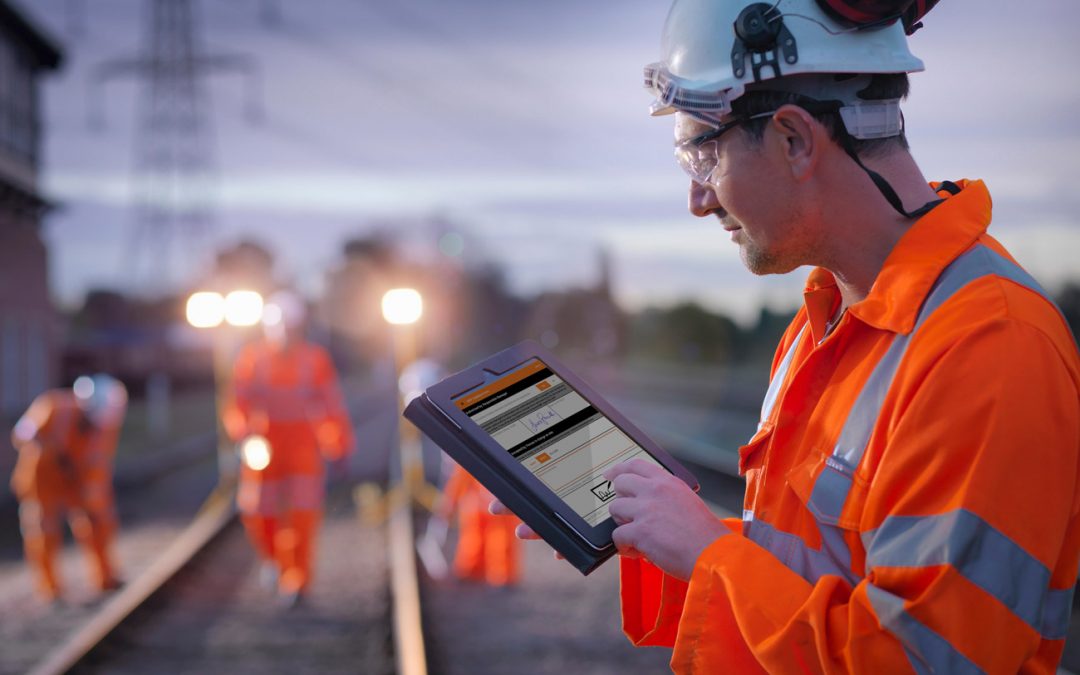Martin Cuthbert, Founder and Managing Director of rail software company, OnTrac, considers why digital transformation in the rail industry cannot come soon enough
Technology is disruptive by nature, but in recent years we’ve seen more and more businesses reaping the benefits after making the leap to digital. Now, the UK rail industry is on the precipice of a digital revolution for 2021. The shift looks set to change the future of rail in many different ways, from administrative processes to planning frontline works. This couldn’t come sooner to the industry; embedded in traditional, inefficient paper-and-pen processes, rail is crying out to be transformed.
The change is not only necessary for a rail supplier’s bottom line, but crucially it is necessary to improve safety. The concept of risk, operative health and rail safety needs to be rigorously managed within the heavily regulated rail industry. Too many accidents are still occurring on or near the line; according to research from HSE, 41 deaths occurred last year on UK railways, for entirely avoidable reasons.
In the 2018/19 period, there were 205,000 close calls reported by Network Rail – over 50,000 more than had been forecast. Further to this, there was an incident at Margam station in which two track workers were fatally struck by a train, due to a breakdown in communication. These tragic events were the instigator behind Network Rail’s newest safety initiative to be launched in early 2021, Planning4Delivery.
An intrinsic part of the programme is a transition of manual processes to digital. The capacity that technology has to improve safety within the rail industry is unquestionable, and will be used to ensure injuries, near-misses and fatalities on or near the track are eradicated.
Real-time communication
The disparate nature of the rail industry means communication between workers can prove to be a logistical nightmare. The traditional paper-and-pen processes aren’t fit for purpose, as changes or hazards can only be fed back after a day on-site, resulting in an oblivious workforce. A prime example of this is the Margam incident last July; according to the final RAIB report, the workers there were ‘carrying out a maintenance activity which they did not know to be unnecessary’.
Enabling track workers to communicate in real-time is crucial, and having a digital process in place is the solution. Safety inspections can be carried out via mobile technology, ensuring all affected on-site are constantly updated on the environment they’re working in. Rail projects regularly change; a manager on-site can make trackside changes to the works which can throw the whole agenda up in the air. Having this real-time communication means no work is done unnecessarily or unsafely.
Maintenance predictions
Reducing the number of track workers on the frontline is an obvious way to decrease risk. At present, maintenance works are scheduled rigidly into the diary and engineers are sent out when it may not be necessary. On the opposite end of the spectrum, without the use of technology, issues with fixed rail assets such as track or wheels can be left undetected until they fail, causing major disruption to train journeys and timetables.
The solution is to attach ‘data loggers’ to assets. These data loggers will track and monitor switch movements; the analysis of this data allows users to begin to realistically predict failures. Instead of manually visiting sites and reacting to failures – i.e. railway workers replacing assets once they have failed – users can not only begin to predict when an asset will fail, but also prevent failure entirely by replacing degrading assets before they become an issue. This improves safety and efficiency not only for the workers but also the passengers, and allows for rail works to be planned more effectively.
Data analysis
The rail industry has always been very thorough in investigating accidents and incidents, just as it has always been very rich in data. However, it’s the combining of these two factors that has been lacking. The practice of filing critical paper forms away in a cupboard where they’re forgotten about is all too common, rather than analysing the information, meaning problem areas and hazards take longer to be detected.
The rail industry can do so much more now with the help of machine learning, to find patterns and common threads in accidents and incidents happening across the whole industry. Knowledge is power, and having automated, high-quality data analysis empowers managers within the rail industry to mitigate risk and plan as effectively and safely as possible by learning from past projects.
Safe and secure
The existing paper-based process throws up a myriad of potential problems. Loss, damage, human error, and illegible writing are issues you can’t afford to have when dealing with safety-critical documentation.
A digital system documents what work is happening, when and where. Importantly, it helps workers understand the precautions required to carry out a task safely, and lets managers approve that safety protocols are being followed. It also provides accountability for enforcing safe working behaviours, with a clear digital audit trail.
Digital is the future
As the world and technology continues to propel forward, the benefits this presents to the rail industry are obvious. Digitising has the capability not only to improve business functions but also dramatically improve the safety of their workers. The time to take action and improve processes in good conscience is now, and it begins with digital transformation.


Martyn Cuthbert is Founder and Managing Director of rail software company, OnTrac. He has worked within the rail industry for the past 25 years, and has been digitising their processes for the past 12.
The post Zero tolerance: UK Rail’s shift to digital will ensure complete safety for all appeared first on .


